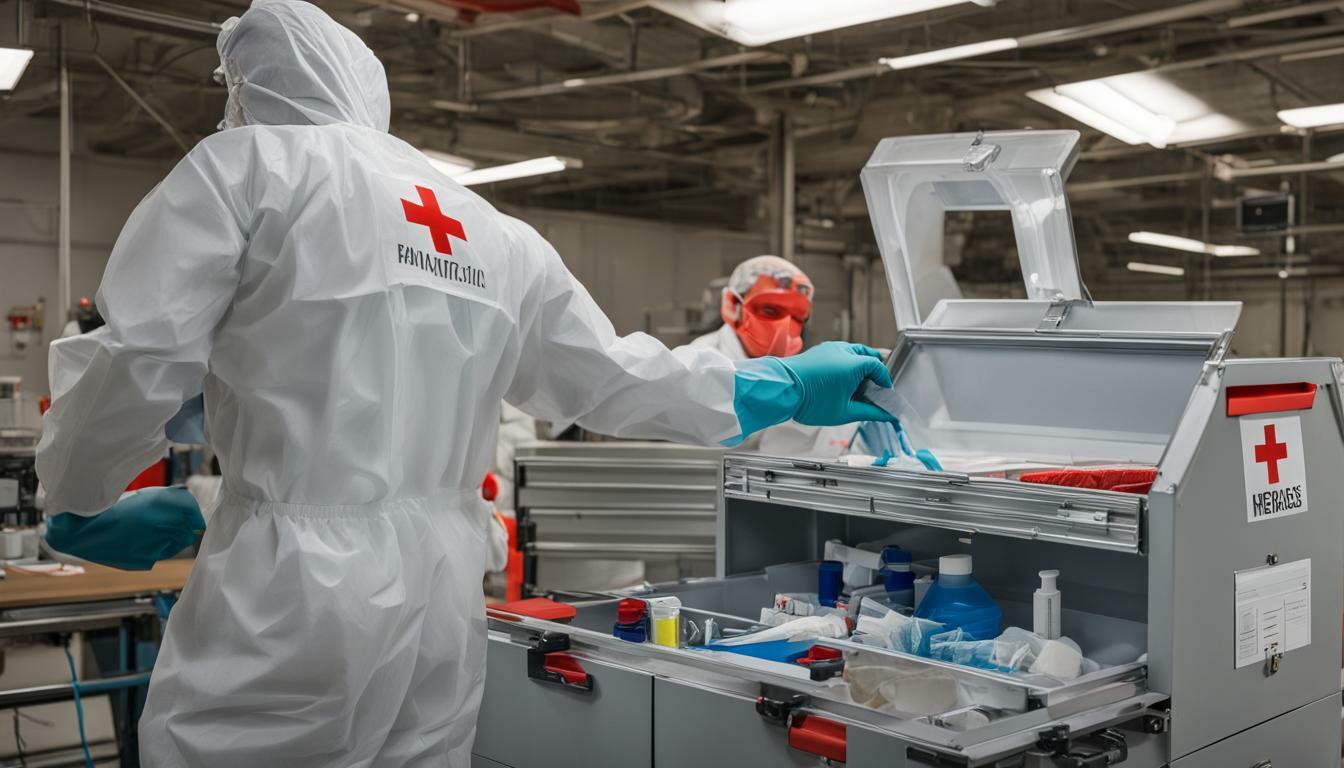Welcome to our comprehensive guide on First Aid Kits for Industrial Painters. As an industrial painter, you face a number of hazardous materials and conditions in your work environment. Therefore, it is crucial to prioritize safety equipment, workplace safety, occupational health, and safety training to minimize the potential risks and ensure your well-being while on the job.
Personal Protective Equipment (PPE) plays a significant role in protecting against the risks of hazardous materials and chemicals. Moreover, identifying hazards and taking safety precautions can further enhance your protection. We will provide you with important information on how to choose the right first aid kit and the essential contents that will help keep you and your colleagues safe. Lastly, we will explore the importance of emergency preparedness and understanding how to react when facing critical situations.
In this guide, we will delve into all these safety-related aspects, emphasizing the significance of first aid kits for industrial painters, and the role they play in promoting occupational health, preventing further injuries, and fostering emergency preparedness in the workplace. Stay with us for more detailed information on all these crucial topics.
Hazards Faced by Industrial Painters
Industrial painters are exposed to a range of hazards on a regular basis. These hazards can cause injury, illness or even fatalities if appropriate safety precautions are not taken. It is crucial that industrial painters are aware of the risks they face and take measures to protect themselves.
The most common hazards faced by industrial painters include those associated with working with hazardous materials. These materials can include solvents, lead, and other harmful chemicals. Exposure to these substances can result in skin irritation, respiratory problems, and other serious health issues. To minimize the potential dangers, industrial painters must wear appropriate personal protective equipment (PPE) such as respirators, gloves, and safety glasses.
Safety precautions are also essential in minimizing risks. Industrial painters must ensure that they follow proper safety procedures and use the appropriate equipment. For example, they may need to use ladders or scaffolding when working at heights, or they may need to ventilate work areas to prevent exposure to harmful fumes. By following safety precautions, industrial painters can prevent accidents and protect their health.
| Hazards | Protection Measures |
|---|---|
| Hazardous materials | Using appropriate PPE, such as respirators, gloves, and safety glasses. |
| Working at heights | Using ladders or scaffolding as appropriate, and ensuring that they are stable and secure. |
| Harmful fumes | Ventilating work areas to prevent exposure. |
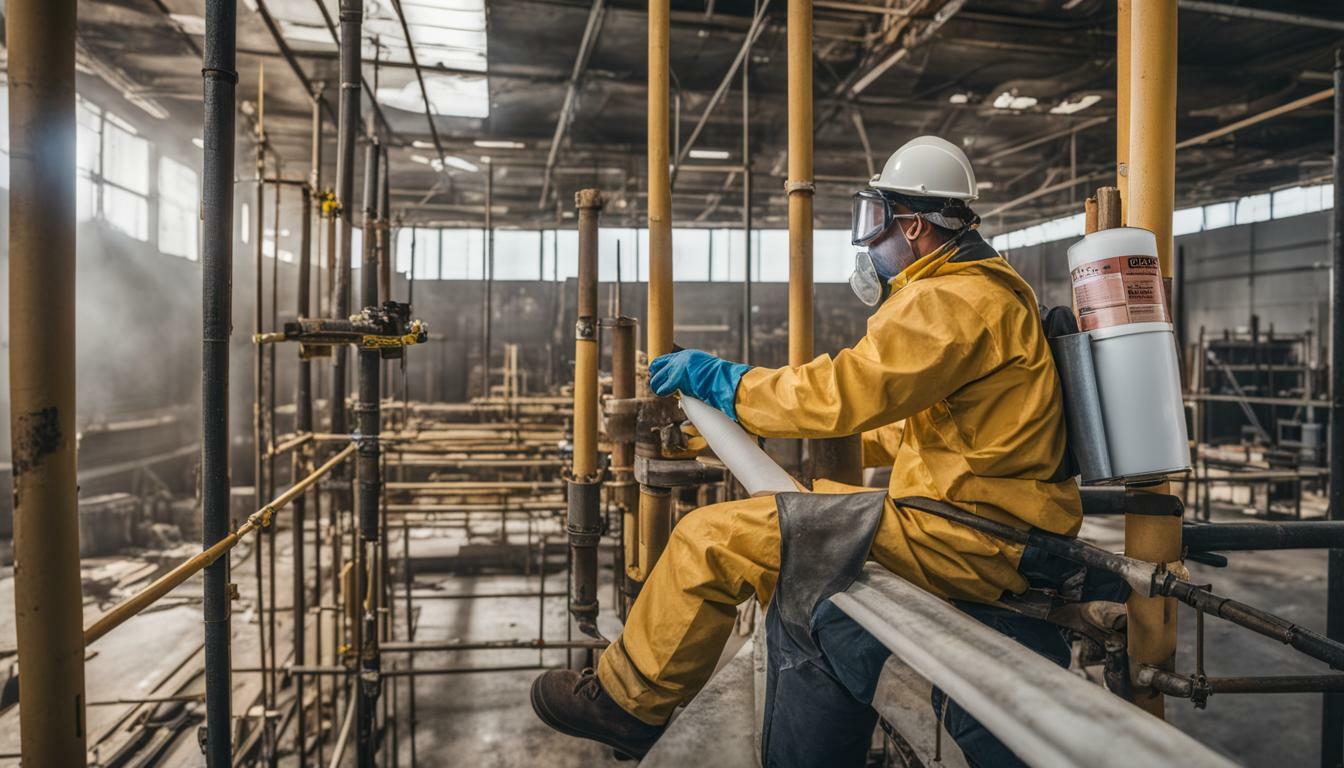
In the next section, we will discuss the importance of first aid kits for industrial painters and the essential supplies that should be included in them.
Importance of First Aid Kits for Industrial Painters
Industrial painters face a variety of hazards in their line of work, including potential exposure to hazardous materials, burns, and eye injuries. Therefore, it is essential to have a well-equipped first aid kit on-site.
First aid kits play a significant role in promoting occupational health and preventing further injuries. They provide immediate medical attention in case of an accident and can help minimize the severity of an injury.
It is essential to ensure that your first aid kit contains all the necessary supplies to address the potential injuries that industrial painters may face. These supplies may include bandages, antiseptics, burn dressings, ice packs, and more.
Moreover, emergency preparedness is a critical factor in promoting workplace safety. Regularly inspecting and restocking your first aid kit is crucial in ensuring that it is always equipped for an emergency.
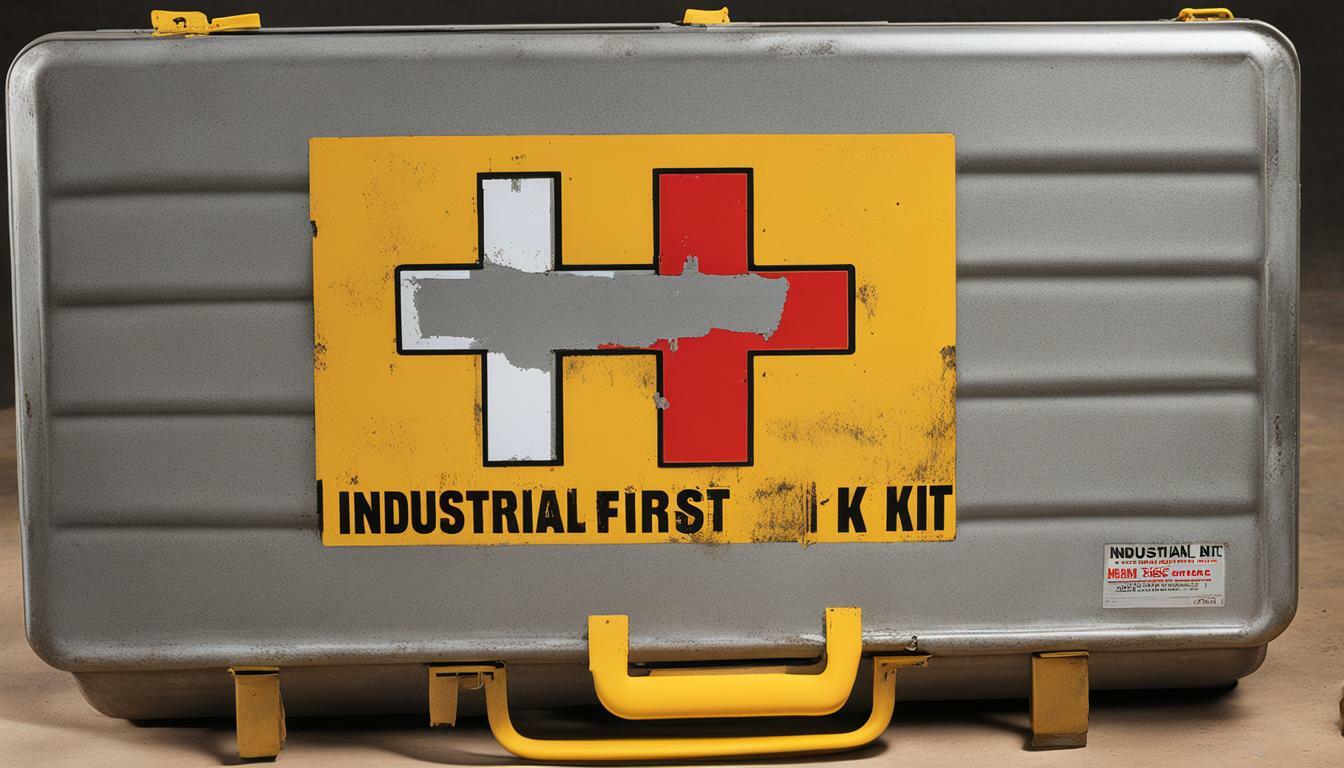
Emergency preparedness also involves educating employees on how to use the first aid kit and administering first aid treatment. Therefore, providing first aid training courses is an integral part of maintaining a safe work environment.
In conclusion, having a well-stocked first aid kit and providing first aid training courses are essential in promoting occupational health and safety. Emergency preparedness is crucial in minimizing the severity of injuries and ensuring that industrial painters can carry out their work safely.
Choosing the Right First Aid Kit
Choosing the right first aid kit for industrial painters is crucial for workplace safety and occupational health. It is essential to consider the specific safety requirements and workplace conditions when selecting a first aid kit. Additionally, compliance with occupational safety standards is necessary to ensure the kit meets the necessary regulations.
Industrial painters work with hazardous materials and may face potential hazards such as chemical spills and burns. Therefore, it is crucial to select a first aid kit that is equipped with the appropriate safety equipment to address such emergencies. The first aid kit should contain items such as burn dressings, sterile eyewash solutions, and disposable gloves. Moreover, it should have adequate space to store a range of first aid supplies.
When selecting a first aid kit, it is also important to consider workplace safety and the nature of the work environment. For example, an outdoor work area may require a first aid kit that is waterproof and durable. The kit should also be easily accessible and visible in case of an emergency.
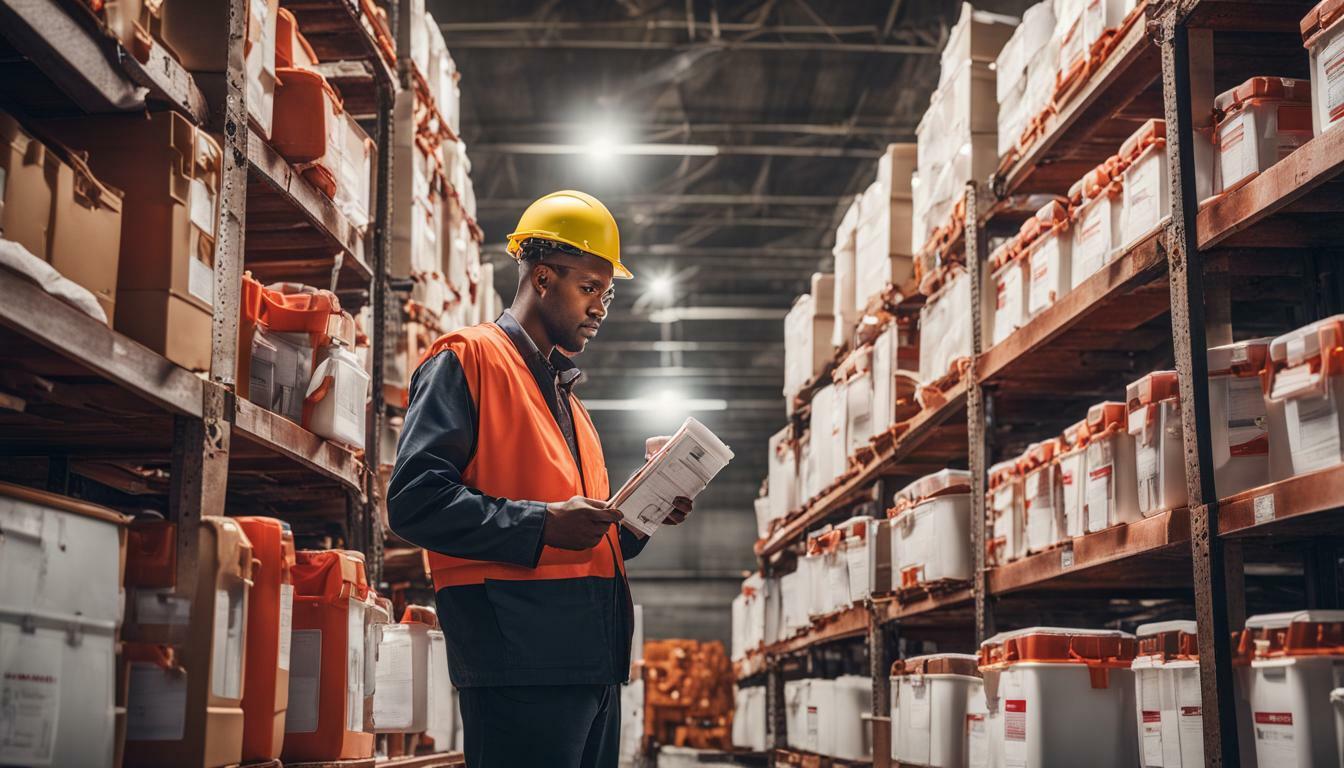
Overall, choosing the right first aid kit for industrial painters is crucial for ensuring workplace safety and preventing injuries. By selecting a well-equipped kit that meets occupational safety standards and workplace conditions, industrial painters can work safely and confidently.
First Aid Kit Contents for Industrial Painters
When it comes to maintaining workplace safety for industrial painters, having a well-stocked first aid kit is essential. These kits should include a variety of first aid supplies and personal protective equipment (PPE) to ensure that workers are adequately protected and can respond to injuries promptly.
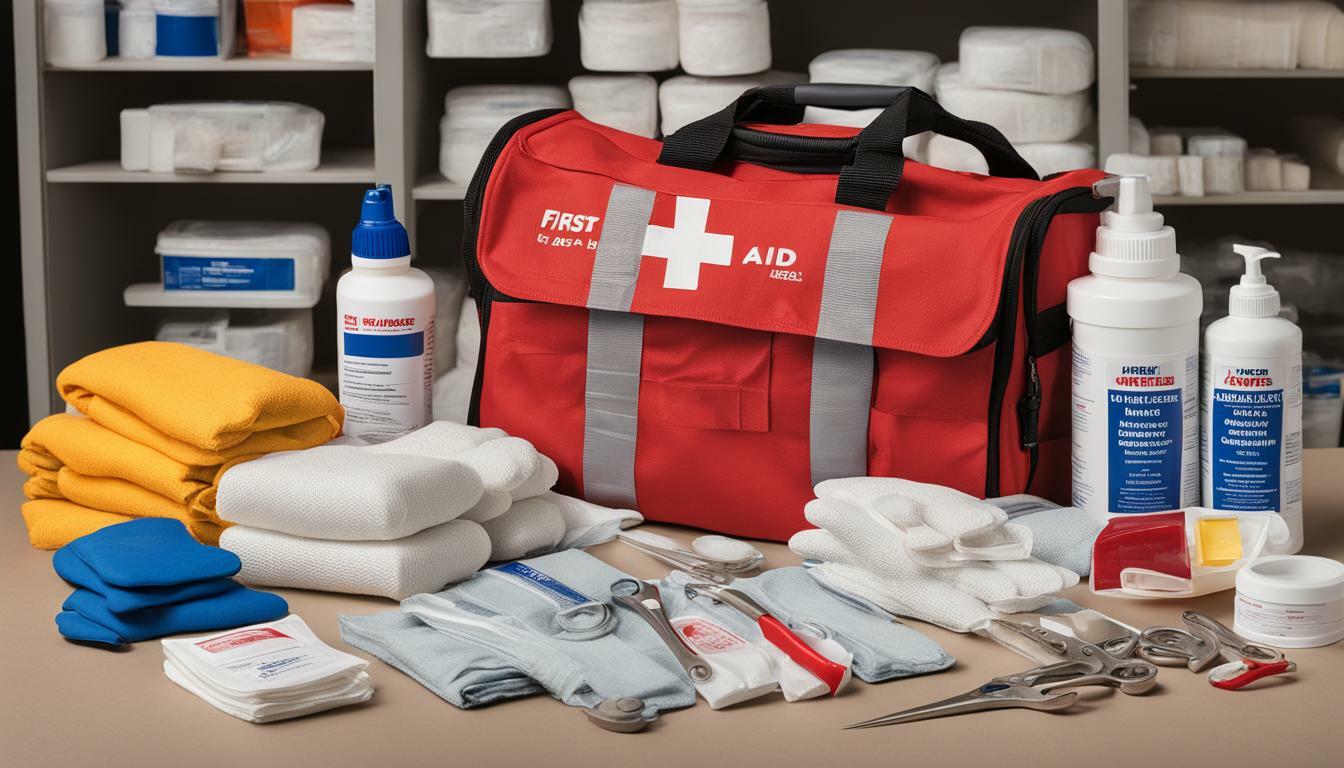
Some of the necessary first aid supplies to include in these kits are bandages of various sizes, adhesive tape, sterile gauze pads, antiseptics, burn dressings, and eye wash solutions. It’s also crucial to include PPE, such as gloves, respirators, and safety goggles, to minimize the risk of exposure to hazardous materials.
In addition to these supplies, industrial painters should have materials for hazard identification in their first aid kits. This includes digital thermometers, scissors, tweezers, and flashlights. These items can help identify potential hazards and respond to injuries that may occur.
It’s essential to regularly check and restock these first aid kits to ensure that all supplies are up-to-date and in good condition. By doing so, industrial painters can be confident that they are well-prepared to handle any potential injuries or emergencies that may arise on the job.
Safety Training for Industrial Painters
Industrial painters face various hazards in the workplace, including exposure to hazardous materials, falls, and respiratory problems. Therefore, providing safety training is crucial to ensuring their well-being while carrying out their essential work.
Effective safety training involves educating industrial painters on workplace safety and occupational hazards. This includes instruction on the proper use of personal protective equipment (PPE) and identifying potential hazards in the workplace. Additionally, safety training should encompass practical knowledge of emergency procedures and first aid measures, as well as regular safety refresher courses.
Implementing a comprehensive safety training program can help reduce workplace accidents, injuries, and illnesses. It can also boost employee morale and productivity, creating a positive work environment.
Employers should also prioritize workplace safety by providing access to safety equipment and ensuring compliance with occupational safety standards. This includes regular safety inspections, hazard identification, and effective communication of safety protocols.
Overall, safety training is essential for promoting workplace safety and minimizing the potential risks that industrial painters face. By investing in employee safety, employers can protect their workforce and maintain a healthy work environment.
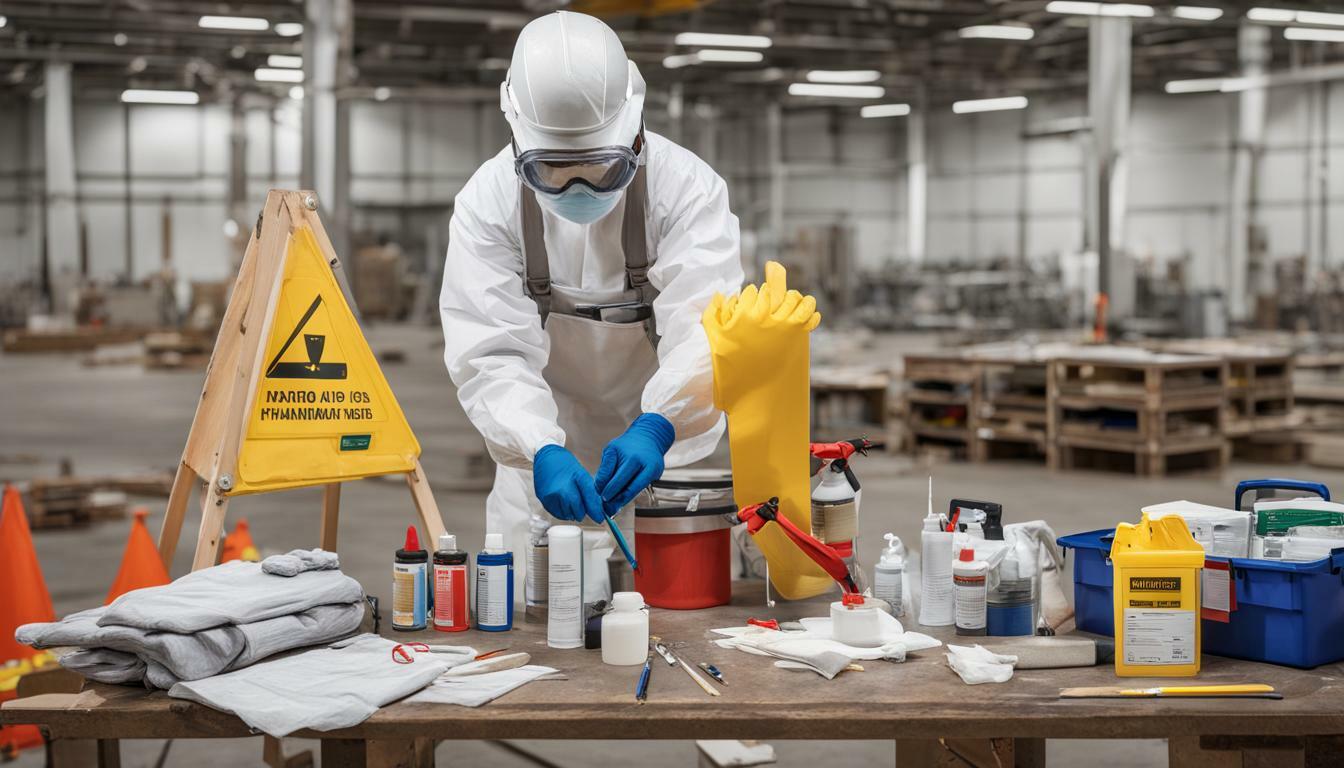
Keyword density: Safety Training – 4, Industrial Painters – 2, Workplace Safety – 2, Occupational Safety – 2
Implementing Safety Precautions
Ensuring workplace safety for industrial painters requires the implementation of effective safety precautions. To do this, it is important to identify potential hazards in the workplace and take steps to minimise their impact. Regular safety inspections should be carried out to identify areas that may require attention, and risk assessments should be conducted to determine the likelihood and severity of each hazard.
To maintain a safe working environment, it is important to establish clear communication channels between management and employees. This will help ensure that everyone is aware of potential hazards and safety measures in place, and they know how to report any incidents or concerns. Providing comprehensive training for employees on safety protocols and hazard identification is also crucial.
Industrial painters should also have access to appropriate personal protective equipment (PPE), including respirators, gloves, and protective clothing, to minimise exposure to hazardous materials. The use of appropriate PPE should be mandatory, and employers should provide training to ensure it is worn correctly and consistently.
| Hazard Identification Checklist |
|---|
| Conduct regular safety inspections to identify hazards in the workplace. |
| Ensure employees are aware of potential hazards and know how to report incidents or concerns. |
| Provide comprehensive safety training for employees on hazard identification and safety protocols. |
| Make appropriate personal protective equipment (PPE) available and ensure it is worn correctly and consistently. |
By implementing safety precautions and establishing clear communication channels, industrial painters can reduce the risks associated with their work and ensure a safe working environment.
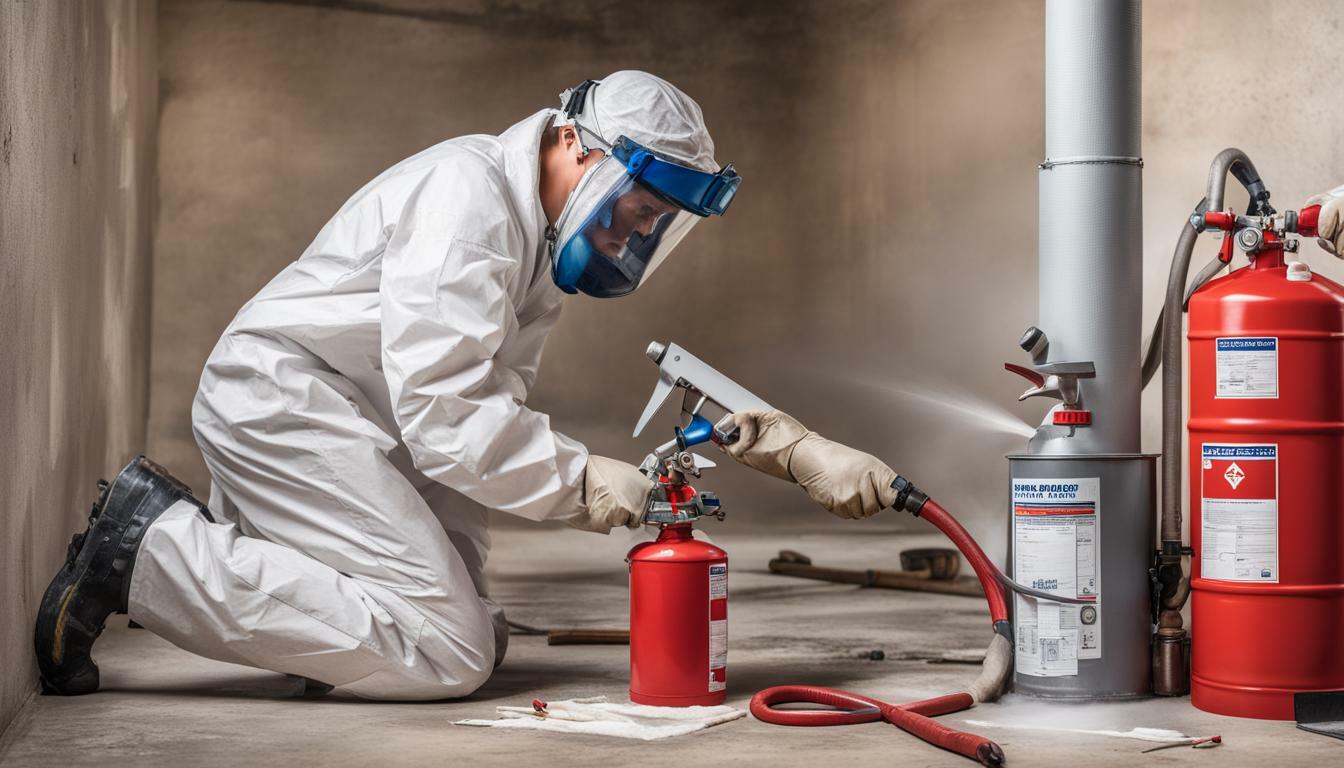
Ensuring Emergency Preparedness
In addition to having the right safety equipment, it is crucial to ensure emergency preparedness for industrial painters. This includes having a fully equipped first aid kit on-site, regularly inspecting safety equipment and procedures for accessing emergency medical assistance. By prioritizing emergency preparedness, industrial painters can minimize the impact of accidents and injuries.
| First Aid Kits for Industrial Painters | Safety Equipment |
|---|---|
| Having a well-stocked first aid kit is essential for emergency situations. These kits should include all the necessary first aid supplies, such as bandages, antiseptics, and burn dressings. It is also important to regularly check the contents of the kit, ensuring that they are up to date and in good condition. | Along with a first aid kit, it is important to have safety equipment that is easily accessible and properly maintained. This includes fire extinguishers, eye wash stations, and safety showers. |
Industrial painters should also have a clear understanding of emergency procedures and contact information for emergency services. Regular drills and training exercises can prepare workers to respond efficiently and effectively in emergency situations.

By prioritizing emergency preparedness and having the appropriate safety equipment, industrial painters can be better equipped to handle accidents and injuries in the workplace.
Conclusion
In conclusion, it is important to prioritize workplace safety and occupational health for industrial painters. Hazards such as exposure to hazardous materials can lead to severe injuries, making it crucial to implement safety precautions and have proper protection. First aid kits play a vital role in promoting occupational health and ensuring emergency preparedness, providing immediate medical attention in case of an accident or injury.
Choosing the right first aid kit for industrial painters should involve considering the specific safety requirements and workplace conditions, as well as complying with occupational safety standards. The contents of the first aid kit should include essential supplies such as bandages, antiseptics, burn dressings, personal protective equipment (PPE), and materials for hazard identification.
Safety training and regular safety refresher courses can enhance awareness of workplace safety and occupational hazards for industrial painters. It is essential to implement safety precautions, conduct regular safety inspections, and communicate them effectively to maintain workplace safety. Emergency preparedness is also critical, and having a well-equipped first aid kit on-site and procedures for accessing emergency medical assistance can save lives.
By prioritizing workplace safety, occupational health, and emergency preparedness, industrial painters can ensure their well-being while carrying out their essential work. Investing in first aid kits, safety equipment, safety training, and implementing safety precautions can prevent injuries, save lives, and ultimately improve the quality of work and life for all involved.
